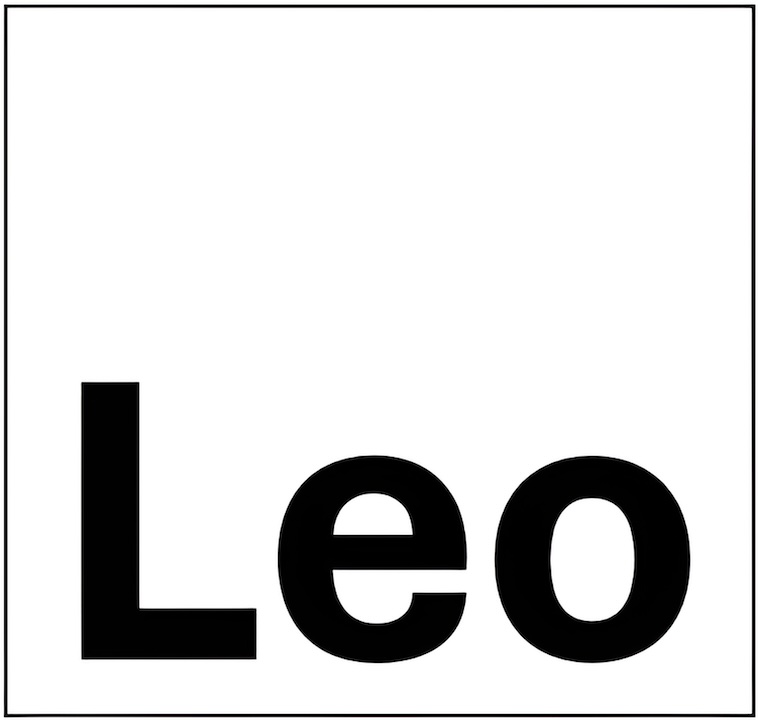Earlier this year, a jury trial was held in the matter of G+ Communications, LLC v. Samsung Electronics Co., Samsung Electronics America, Inc., Case No: 2:22-CV-00078-JRG (E.D. Texas). Pursuant to the jury’s verdict, two of the three patents asserted were found to be infringed by Samsung, and compensation was awarded to G+ in the amount of $45 million for one patent and $22.5 million for the other. The verdict further indicated these amounts were running royalties as opposed to lump sum royalties. Additionally, the jury found G+ had not “breached its [fair, reasonable and non-discriminatory] FRAND obligation by failing to offer a license to the Asserted Patents to Samsung that was fair, reasonable, and non-discriminatory, and by failing to act in good faith regarding negotiations with Samsung as to a FRAND license covering the Asserted Patents.”
Huge datasets and limitless computing power are converging to upend the practice of healthcare, especially the speed and accuracy of detecting major diseases. “We can manage terabytes of data in seconds, then move and store it in the cloud,” explains pioneering physicist, bioengineer, and serial entrepreneur Alan C. Nelson in a new conversation with Bruce Berman on his podcast ‘Understanding IP Matters.’ This capacity is markedly different than thirty years ago when Nelson began using AI to invent new tools to improve health outcomes.
Intellectual property litigation in the 21st century has brought to the fore systems for asserting infringement in which IP owners may be spared some of the huge expense of litigation by “routing” extra-judicial enforcement activities through a third party. They may do so by availing themselves of programs operated by middlemen such as Amazon, which can potentially cripple a competitor with the threat of removal from Amazon.com, while the patentee can claim to be immune from a declaratory judgment suit on the accused infringer’s home turf.
It is hardly an exaggeration to say that pretty much every business of every size possesses information that would qualify for trade secret protection. This is because under federal law the term “trade secret” is defined very broadly to capture virtually all types of tangible or intangible information. Specifically, the Defense of Trade Secrets Act (DTSA), which became law in 2016, defines trade secrets to include “all forms and types of financial, business, scientific, technical, economic, or engineering information, including patterns, plans, compilations, program devices, formulas, designs, prototypes, methods, techniques, processes, procedures, programs, or codes”
On February 27, the U.S. Patent and Trademark Office (USPTO) published a notice in the Federal Register providing updated guidance for agency decision-makers on making proper determinations of obviousness under the U.S. Supreme Court’s 2007 ruling in KSR International Co. V. Teleflex Inc. While the USPTO’s examiner guidance doesn’t constitute substantive rulemaking, it traces 15 years of case law from the U.S. Court of Appeals for the Federal Circuit to clarify several areas of confusion stemming from the Supreme Court’s calls for a flexible approach to the obviousness analysis for patent validity.
On February 20, the U.S. Supreme Court issued an order list that denied petitions for writ of certiorari filed in at least five intellectual property cases. While none of these cases induced large numbers of amici to ask the Court to grant cert, they do represent several current issues in IP law that remain unaddressed. From the use of joinder to evade time-bar limits in patent validity proceedings to the service of process required for a grant of preliminary injunction, the Court’s cert denials leave several open questions with which the patent and trademark community will likely grapple.
The U.S. Court of Appeals for the Federal Circuit (CAFC) issued a precedential decision on Thursday vacating the Trademark Trial and Appeal Board’s (TTAB’s) denial of a petition to cancel a trademark for a medicated tea product to treat colic in babies. Naterra International, Inc. petitioned the TTAB to cancel the mark BABIES’ MAGIC TEA based on likely confusion in the market with its own registrations for the mark BABY MAGIC, which cover “numerous toiletry goods.” The Board found that Naterra failed to prove confusion under the 13 DuPont Factors.
In 1945, American engineer and the first Director of The Office of Scientific Research and Development, Vannevar Bush, published a famous report, Science and The Endless Frontier, which stated that “scientific progress is one essential key to our security as a nation, to our better health, to more jobs, to a higher standard of living, and to our cultural progress.” However, scientific progress could not be achieved until a streamlined patent system that incentivized and rewarded inventors was created.
On Tuesday, May 7, the U.S. Court of Appeals for the Federal Circuit will hear argument in a long-awaited appeal addressing the inventorship of the Nobel Prize-winning CRISPR technology. The case is the latest in a continuing legal battle between two groups of innovators, each asserting patent rights to key aspects of the groundbreaking technology.
On May 2, the World Intellectual Property Organization (WIPO) issued its most recent biennial report, entitled “Making Innovation Policy Work for Development,” which analyzes patent filing, scientific publications and economic data across the globe over the last two decades to identify innovation policies effective at diversifying national economies. While WIPO’s report underscores the highly concentrated nature of the global innovation economy, it also highlights several countries that have seen significant improvements in their own technological diversification during the study period.
The U.S. Senate Committee on Health, Education Labor & Pensions held a hearing today on why the United States pays “by Far, the Highest Prices in the World for Prescription Drugs.” Patents came up throughout the hearing as one barrier to lowering prescription drug prices, while pharmaceutical industry representatives underscored the cost of bringing innovative and life-saving drugs to market and the superior access Americans have to such drugs compared with other countries.
On February 12, the U.S. District Court for the District of Columbia denied a motion for preliminary injunction filed by Circuit Judge Pauline Newman, who has been at the center of a controversial inquiry into her current fitness to continue serving as a federal appellate judge. Despite acknowledging that all of the recent complaints against Judge Newman’s mental fitness continue to be unsubstantiated, the D.C. district court determined that most of Judge Newman’s requested relief was foreclosed by legal precedent limiting constitutional challenges to the Judicial Conduct and Disability (JC&D) Act. However, the court said it maintains jurisdiction over three of the 11 counts, and part of another, brought by Newman.
On February 6, the U.S. Court of Appeals for the Fourth Circuit issued an opinion in Philpot v. Independent Journal Review reversing a ruling that an online reproduction of a photograph of singer-songwriter Ted Nugent constituted fair use. The Fourth Circuit further found that professional photographer Larry Philpot was entitled to summary judgment on the validity of his copyright registration, vacating the Eastern District of Virginia’s determination that a genuine dispute of material fact existed as to the accuracy of Philpot’s registration application.

Featured Contributors
![[Avatar for Madeleine Key]](https://ipwatchdog.com/wp-content/uploads/2022/02/Madeleine-Key-Head-Shot.jpg)

IPWatchdog Events
Webinar: Don’t Be Blindsided – How a Competitive IP Intelligence Program Can Protect Your Company
May 16 @ 10:00 am - 11:00 am EDT
Subscribe to IPWatchdog
This is the best way to stay informed. We send a daily roundup of our latest news, press releases, and events.
Get Email Updates
Industry Events
No Upcoming Industry Events
Check back later or promote your own!

Recent Podcasts


![[IPWatchdog Logo]](https://ipwatchdog.com/wp-content/themes/IPWatchdog%20-%202023/assets/images/temp/logo-small@2x.png)
![[Advertisement]](https://ipwatchdog.com/wp-content/uploads/2024/04/Quartz-IP-May-9-2024-banner-with-speakers-new-photo-1500x500-CLE.jpg)
![[Advertisement]](https://ipwatchdog.com/wp-content/uploads/2024/04/Patent-Litigation-2024-banner-last-chance-1500x500-1.jpg)
![[Advertisement]](https://ipwatchdog.com/wp-content/uploads/2024/05/Patent-Portfolio-Management-2024-banner-super-early-bird-with-button-1500x500-1.jpg)
![[Advertisement]](https://ipwatchdog.com/wp-content/uploads/2024/04/Patent-Litigation-Masters-2024-sidebar-last-chance-700x500-1.jpg)
![[Advertisement]](https://ipwatchdog.com/wp-content/uploads/2024/05/Patent-Portfolio-Management-2024-sidebar-super-early-bird-with-button-700x500-1.jpg)
![[Advertisement]](https://ipwatchdog.com/wp-content/uploads/2024/05/Artificial-Intelligence-2024-Getting-AI-Patents-Allowed-sidebar-700x500-1.jpeg)
![[Avatar for Gene Quinn]](https://ipwatchdog.com/wp-content/uploads/2015/05/Gene-09-19-2023-1-copy-1.jpeg)
![[Advertisement]](https://ipwatchdog.com/wp-content/uploads/2019/07/Write-IPWatchdog.jpg)
![[Avatar for Wen Xie]](https://ipwatchdog.com/wp-content/uploads/2022/01/XIE-Wen-Xie-Global-IP-Counselors-square-scaled-1.jpg)
![[Avatar for Randall Rader]](https://ipwatchdog.com/wp-content/uploads/2019/10/Randall-Rader-copped.jpg)
![[Advertisement]](https://ipwatchdog.com/wp-content/uploads/2021/12/Ad-5-The-Invent-Patent-System™.png)



![[Advertisement]](https://ipwatchdog.com/wp-content/uploads/2021/12/WEBINAR-336-x-280-px.png)









![[Advertisement]](https://ipwatchdog.com/wp-content/uploads/2021/12/2021-Patent-Practice-on-Demand-recorded-Feb-2021-336-x-280.jpg)
